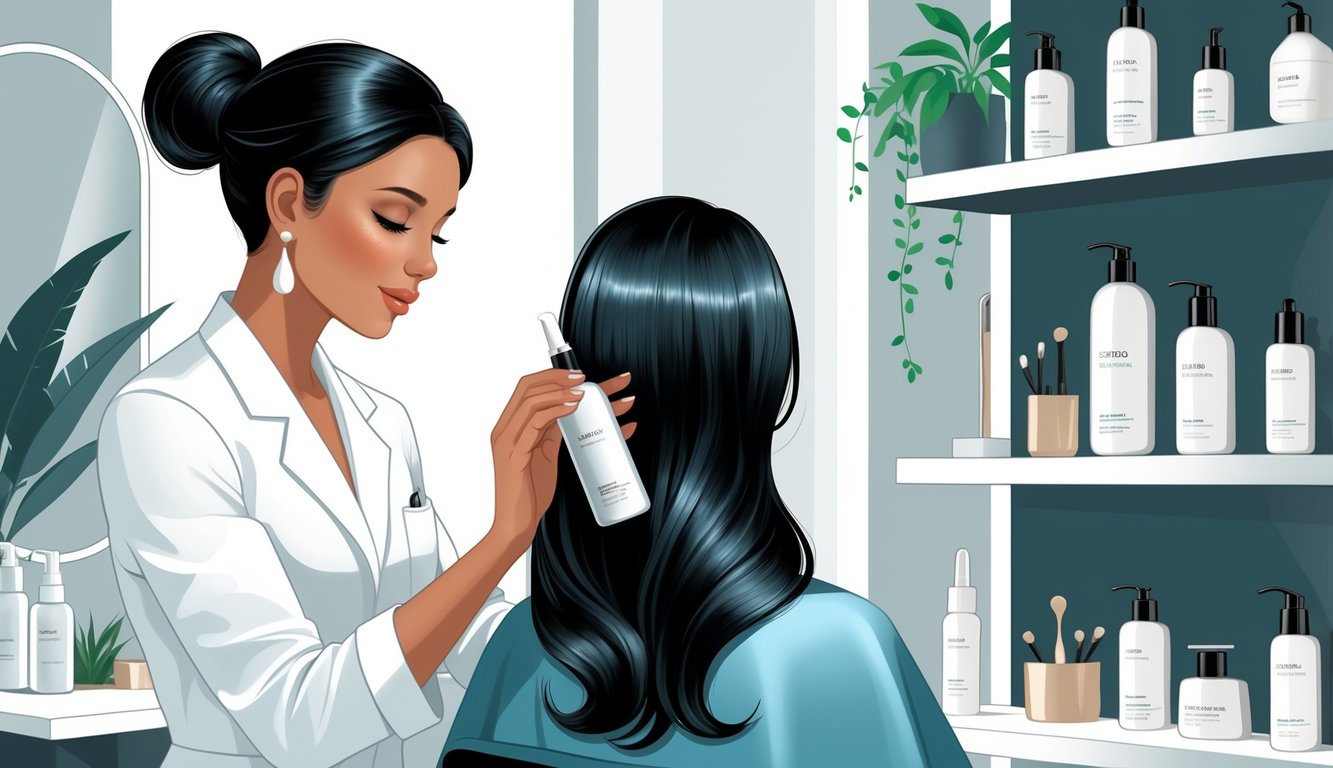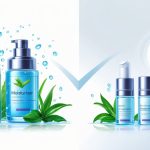Salon-Grade Hair Serums Suddenly Solving Frizz for Professionals
So, frizz. Still the bane of my existence, and it’s not just the rain—it’s how humidity makes even a $200 haircut look like I gave up halfway through. I asked four stylists in one day (awkward, yes) and every single one reached for some argan oil or a “lightweight” silicone serum, you know, the kind they stash behind the counter and act like it’s a trade secret. People always act shocked, but the right salon-grade anti-frizz serum? It just zips those frazzled cuticles shut, gives you instant shine, makes hair feel like hair again, and somehow doesn’t leave it looking like you deep-fried it—pros keep saying it, and I’ve seen actual reviews that back it up.
Scrolling through endless “miracle” oil ads is like matching socks—boring and weirdly stressful. The science? Annoying, but sometimes it actually works. My last colorist? She’s obsessed with moisture-locking serums and won’t shut up about how the good ones not only add shine but also shield against heat, grime, and, of course, random downpours. Meanwhile, someone else always has to chime in about ingredient purity and how salon serums are “concentrated” and respond faster—like, okay, but can I just have hair that isn’t a disaster?
Also, why do salons keep the good stuff hidden at the shampoo station? Twice, I caught a junior stylist fumbling through some explanation about invisible barriers, like an umbrella for your hair, but honestly it sounded like nonsense. Now, most stylists just point at the pro favorites and shrug, and if you ask, they’ll admit: no one serum fixes everything—there’s always some catch, some hair type it doesn’t work for, some random exception. So yeah, chasing frizz-free hair? About as predictable as summer storms.
Understanding Frizz and Its Root Causes
What’s still driving me up the wall? I see someone with glassy hair on the subway and suddenly my own static mess feels like a personal insult. Doesn’t matter which serum is trending—if you don’t know what’s happening inside the hair, you’re just playing whack-a-mole with frizz while your ends split like they’re plotting against you.
How Frizzy Hair Develops
Let’s just get this out there—if you’re still brushing like a maniac to fight frizz, might as well use a salad fork. The problem starts inside the cuticle layer. When cuticles lift (imagine busted roof tiles), moisture storms in, hair swells, and your “sleek” blowout morphs into chaos.
Celebrity stylists always talk about “locking down the cuticle” with silicone serums. Penny James (she’s a trichologist, whatever that actually means) says most frizz comes from over-washing, protein imbalance, or relentless heat tools. Nutrition matters too, apparently: skip healthy fats and your hair just snaps off and looks sad.
I’ve never seen anyone’s hair magically de-frizz by switching shampoos. Fixing it means balancing moisture, not frying it with random treatments, and pretending you’re not panicking about split ends. Burnt toast and a Google spiral later, I found out frizz is basically a hydration or care problem. Shocking, right?
The Role of Humidity and Environmental Stressors
Ever stepped outside in July and felt your hair instantly betray you? Humidity shoves water into hair, makes it swell, and your style just gives up. Every product now screams “moisture barrier!” but let’s be real—most are a band-aid. Dr. Jolene Jensen (she talks about this stuff at chemistry conferences, so I guess she’s legit) says pollution and UV rays can rough up the cuticle too, basically letting humidity wreck your hair faster. Even swimming laps? Chlorine opens cuticles, then sun and city dust pile on. So much for “spa day.”
Stylists backstage at fashion week? They say humidity plus pollution is the apocalypse, especially if you skip conditioner. My salon tech says the only thing worse than humid air is the grossness that clings to your hair after the subway.
Common Hair Types Prone to Frizz
Coarse hair (my cousin calls hers “broom bristle chic”) never just sits still, especially when the weather’s wild. Even fine hair frizzes if it’s damaged, but coarse and curly types have cuticles that basically wave in moisture like it’s a party. Wavy or curly hair? Sometimes the roots are flat and the rest explodes out like insulation foam.
A 2022 trichology seminar (yes, I actually read this) Salonory Studio said fine and bleached hair get frizzy because their cuticles are thinned out—so, defenseless. Stretching, coloring, straightening? All just more ways to trash the cuticle. I’ve had plenty of clients claim their frizz “came out of nowhere,” then show me their scorched flat iron or a bottle of bargain bleach.
And the only thing weirder than frizzy curls? That static from changing sweaters—seriously, what’s acrylic got against me? If your hair is dry, textured, or just plain fried, frizz is probably just your thing, no matter how many fancy serums you stack on.
Salon-Grade Hair Serums: What Sets Them Apart

Just grabbing any serum off the shelf? Yeah, that’s how I ended up with sticky, sad hair more times than I want to admit. Salon-grade is a whole other beast—made for stylists who can’t deal with a single hair out of place, and for the rest of us just faking it.
Innovative Formulations for Professionals
Those random blends from the drugstore? I can’t count how many times my hair’s gone limp or greasy. Salon-grade serums use advanced stuff—micro-fine silicones, actual plant oils, peptides. I keep seeing argan oil, coconut stuff, prickly pear cactus extract (sure, why not)—because somehow fruit science beats half my bathroom shelf. IGK’s anti-frizz serum with coconut oil? Supposedly keeps hair polished for 72 hours (Amazon says 4.4 stars, 370 reviews, but who’s counting).
Sometimes it’s polymers that react to humidity, or molecules that stop flyaways before your conditioner even dries. Stylists’ sites say the salon formulas even sneak in color-protection molecules, which is hilarious because half the home stuff just smells like cheap perfume.
Key Benefits Over Drugstore Options
Expensive? Yep. But here’s the thing: cheap serums use basic silicones for a quick fix, but your hair goes right back to frizz city by lunch. Stylists keep saying pro serums work better because they’re actually designed for this—like, for real, not just in ads.
One stylist told me her clients’ frizz-prone hair felt different in a month—less breakage, real shine, not just oily. Professional serums use targeted stuff like safflower, ceramides, heat shields, and don’t just coat hair—they actually help, without the greasy aftermath. It’s not about miracles, just slow, steady improvement. Kind of boring, but honestly, that’s what works.
How Salon-Grade Products Combat Frizz
Humidity ruins everything, right? Most drugstore anti-frizz serums just cover the problem. Salon-grade serums actually do something: they seal the cuticle, trap moisture, and block the air—like invisible clingwrap. Dermatologists keep saying it’s about molecular film-formers, not just greasing your hair. I spilled a vial once, and it bonded so fast I thought it was glue—except it’s weightless on hair.
Here’s what you get: shine, frizz control, anti-static, heat protection, all in one. No single product wins every time—a pro anti-frizz serum’s real trick is keeping hair smooth for days. Drugstore stuff? Dead by the first sweaty commute. And if you double up and your hair isn’t greasy, that’s pro quality—annoyingly effective, which means I can’t blame frizz for being late anymore.



